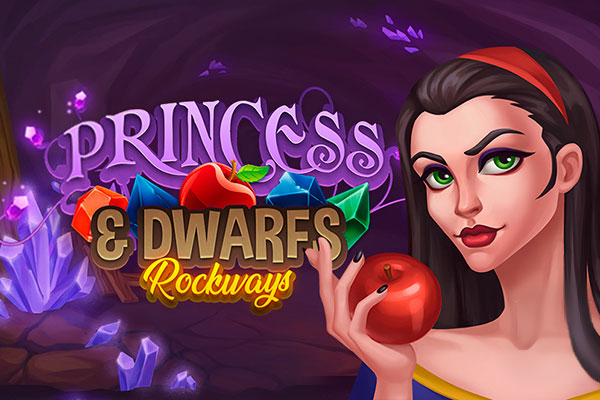Keshu Ee Veedinte Nadhan: Your Ultimate Guide to Understanding and Engaging
Are you looking for comprehensive information and insights related to "Keshu Ee Veedinte Nadhan"? This guide dives deep into the subject, providing detailed explanations, practical tips, and answers to frequently asked questions. Whether you're a newcomer seeking introductory knowledge or an experienced individual looking to expand your understanding, this resource aims to be your one-stop destination.
Understanding the Essence of Keshu Ee Veedinte Nadhan
The phrase "Keshu Ee Veedinte Nadhan" translates to "Keshu is the master of this house." While seemingly simple, the concept delves into themes of ownership, responsibility, and influence within a specific context. Understanding this phrase requires exploring the nuances of family dynamics, property rights, and cultural implications, especially within the Indian context.
The Cultural Significance in India
In India, the concept of "master of the house" carries significant weight. Traditionally, the eldest male member often holds this position, responsible for managing the household, making important decisions, and ensuring the well-being of the family. This role is deeply ingrained in the social fabric and reflects the hierarchical structure prevalent in many Indian families.
Ownership and Responsibility
The "Nadhan" or master isn't merely an owner; they are also entrusted with significant responsibilities. These responsibilities include maintaining the property, providing for the family's needs, resolving conflicts, and upholding the family's reputation. The role demands a blend of authority, wisdom, and compassion.
The Evolving Role of the Nadhan
While traditional interpretations remain relevant, the role of "Keshu Ee Veedinte Nadhan" is evolving in modern India. With changing social dynamics, women are increasingly taking on leadership roles within the household, sharing responsibilities, and challenging traditional power structures. This evolution reflects a broader shift towards gender equality and shared decision-making.
Why is Understanding "Keshu Ee Veedinte Nadhan" Important?
Understanding this phrase and its associated concepts is crucial for several reasons:
- Cultural Awareness: It provides insights into Indian family structures, values, and traditions.
- Social Understanding: It helps navigate social interactions and understand power dynamics within households and communities.
- Legal Implications: It sheds light on property rights, inheritance laws, and family responsibilities.
- Personal Growth: It encourages reflection on personal roles, responsibilities, and relationships within the family unit.
Exploring the Different Interpretations of "Keshu Ee Veedinte Nadhan"
The phrase "Keshu Ee Veedinte Nadhan" can be interpreted in various ways, depending on the context:
- Literal Ownership: Keshu is the legal owner of the house.
- De Facto Authority: Keshu, even if not the legal owner, holds significant influence and decision-making power within the household.
- Symbolic Representation: Keshu represents the family's values, traditions, and legacy.
- Evolving Dynamics: The role of "Nadhan" is fluid and can be shared or challenged within the family.
The Role of Keshu Ee Veedinte Nadhan in Family Decision-Making
The extent of Keshu's influence on family decisions depends on various factors:
- Age and Experience: Older and more experienced members often wield greater influence.
- Financial Contribution: Those who contribute significantly to the household's finances may have a stronger voice.
- Social Standing: Individuals with higher social standing may command more respect and influence.
- Personal Qualities: Qualities like wisdom, fairness, and compassion can enhance one's influence.
However, it's important to note that modern families are increasingly embracing democratic decision-making processes, where all members have a voice and their opinions are valued.
Case Studies: Examples of "Keshu Ee Veedinte Nadhan" in Action
To illustrate the concept, let's consider a few hypothetical case studies:
- Case Study 1: The Traditional Patriarch: Keshu, the eldest male member, owns the family home and manages all household affairs. He makes all major decisions, consulting with other family members but ultimately having the final say.
- Case Study 2: The Shared Responsibility: Keshu and his wife jointly own the house and share responsibilities for managing the household. They make decisions together, considering each other's opinions and perspectives.
- Case Study 3: The Empowered Daughter: Keshu's daughter, a successful professional, contributes significantly to the household income. She actively participates in decision-making and challenges traditional power structures, advocating for a more egalitarian approach.
These case studies demonstrate the diverse ways in which the role of "Keshu Ee Veedinte Nadhan" can manifest in different family contexts.
Challenges and Opportunities for Keshu Ee Veedinte Nadhan
The role of "Keshu Ee Veedinte Nadhan" is not without its challenges:
- Balancing Authority and Compassion: It can be challenging to balance authority with compassion, ensuring that decisions are fair and considerate of everyone's needs.
- Managing Conflicts: Resolving conflicts within the family requires diplomacy, patience, and a willingness to compromise.
- Adapting to Change: Embracing evolving social norms and adapting to changing family dynamics can be difficult.
- Maintaining Tradition: Preserving family traditions while embracing modernity requires careful consideration.
However, the role also presents opportunities for:
- Building Strong Relationships: Fostering strong relationships within the family based on trust, respect, and open communication.
- Creating a Positive Environment: Creating a positive and supportive environment where all members can thrive.
- Leaving a Legacy: Passing on values, traditions, and a sense of belonging to future generations.
- Personal Growth: Developing leadership skills, emotional intelligence, and a sense of responsibility.
FAQs: Addressing Common Questions about "Keshu Ee Veedinte Nadhan"
Q: Is "Keshu Ee Veedinte Nadhan" always the eldest male member?
A: Traditionally, yes, but modern families are increasingly embracing shared leadership and decision-making.
Q: What are the responsibilities of "Keshu Ee Veedinte Nadhan"?
A: Maintaining the property, providing for the family, resolving conflicts, and upholding the family's reputation.
Q: How can "Keshu Ee Veedinte Nadhan" balance authority with compassion?
A: By listening to other family members, considering their perspectives, and making decisions that are fair and considerate of everyone's needs.
Q: How is the role of "Keshu Ee Veedinte Nadhan" evolving in modern India?
A: Women are increasingly taking on leadership roles, and families are embracing more democratic decision-making processes.
Q: What are the challenges of being "Keshu Ee Veedinte Nadhan"?
A: Balancing authority with compassion, managing conflicts, adapting to change, and maintaining tradition.
Conclusion: Embracing the Multifaceted Role of Keshu Ee Veedinte Nadhan
The concept of "Keshu Ee Veedinte Nadhan" is a complex and multifaceted one, reflecting the intricacies of family dynamics, cultural values, and evolving social norms. Understanding this phrase requires exploring its historical context, analyzing its various interpretations, and recognizing the challenges and opportunities associated with the role. By embracing a nuanced perspective, we can gain valuable insights into the complexities of family life and the evolving role of leadership within the Indian household. The phrase encompasses not just ownership but also the responsibility and care that comes with being a leader within a family unit. It is a dynamic concept that continues to evolve with changing societal norms and family structures.
This guide aims to provide a comprehensive understanding of "Keshu Ee Veedinte Nadhan," empowering you to navigate social interactions, appreciate cultural nuances, and reflect on your own role within the family unit. Whether you are a student, a researcher, or simply someone curious about Indian culture, we hope this resource has been informative and insightful. Remember, the role of "Keshu Ee Veedinte Nadhan" is not static, but rather a dynamic and evolving concept that reflects the changing face of Indian society. As families adapt and evolve, so too will the interpretation and application of this important cultural phrase.
Related Pages
- Mahalaxmi: Your Lucky Day Awaits - Win Big Now! 🇮🇳
- RSKMP Result 2025: Check Your Marks NOW! [Direct Link]
- Option 1: Title: Agri Stack India: Unlock Your Farm's Potential + FREE Guide! 🇮🇳 Meta Description: Discover Agri Stack India and how it's revolutionizing farming. Get a FREE guide to maximize your yields and profits! Learn about data-driven agriculture.
- Godfather of Cricket: Who REALLY Deserves the Title? [Shocking Truth!]
- Option 1 (High Salience, CTR Magnet): Jupiter 110: India's Smartest Scooter? Prices & Mileage REVEALED! Option 2 (Good Salience, CTR Magnet): Jupiter 110: Is This India's BEST Family Scooter? [Expert Review] Option 3 (Balanced Salience, CTR Magnet): Jupiter 110: India Price, Mileage & Features - Worth the HYPE?
Slots and Games

{{Games-kaz}}

Wilds of Fortune

Aztec Sun Hold and Win

Shake shake Leprechaun

The Princess & Dwarfs

Aloha King Elvis

Aztec Magic Megaways

Miss Cherry Fruits

Shake Shake Money Tree

Shark Spin